Introduction
At the time of writing, the COVID-19 pandemic caused by the SARS-CoV-2 coronavirus continues to affect the world. More than 43 million confirmed cases and around 1,160,000 deaths, with a second wave in full swing in Europe (https://www.worldometers.info/coronavirus/). The economies of the countries have suffered sharp drops, the education sector badly affected, countries with their borders still closed or with limited air traffic, and millions of people doing remote work. The global scientific community seeks to rapidly understand the COVID-19 pandemic, trying to identify the most efficient route of transmission, developing effective and safe vaccines, and researching the appropriate medical treatment. After 11 months of its appearance in the Wuhan capital of Hubei Province, China, there are many unknowns to solve, but one thing is unquestionable: COVID-19 is highly contagious and deadly.
The World Health Organization (WHO), maintains since the beginning of the pandemic that the SARS-CoV-2 coronavirus is transmitted through (a) fomites (by touching objects that are contaminated and then putting your hands to your eyes, nose or mouth) and (b) droplets, exhaled by an infected person and inhaled by a nearby recipient (person-to-person infection). Regarding transmission by aerosols (smaller particles that float in the air for hours), the WHO considers that they only occur when medical procedures are carried out with infected patients in hospitals; for example, in an intubation (WHO, 2020). In July 2020, before the open letter “It is time to address the airborne transmission of COVID-19” published in the Journal of Clinical Infectious Diseases by 239 scientists and the evidence (increasingly abundant) of the transmission by aerosols (Morawska and Milton , 2020), the WHO ended up recognizing this route of contagion indoors and without ventilation.
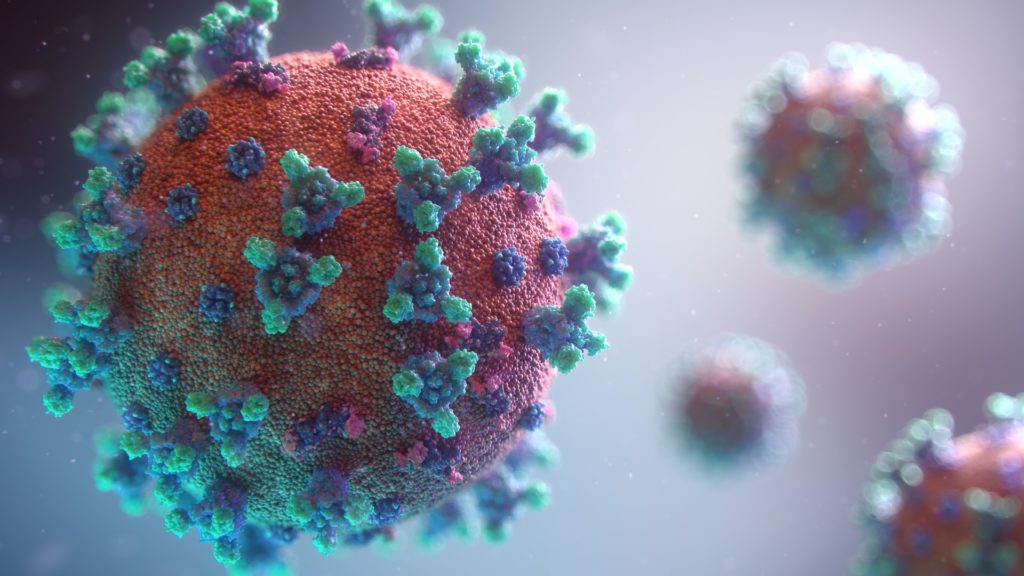
The governments of the world design their contagion control and mitigation strategies, considering the recommendations of the WHO, which suggests a safe distance of 1 meter to avoid infection, assuming that respiratory droplets loaded with the virus fly like a projectile from the mouth of the infected person and fall to one meter. In some countries, regulations were issued to force their population to wear a mask. However, the measures applied have not had the expected positive results. Infections continue, despite the relative protection of people to avoid contagion by fomites and ballistic droplets.
In this context, the question naturally arises: why is this virus so transmissible or contagious? Aerosol scientists argue that the high contagion of SARS-CoV-2 is due to transmission through aerosols. They question the cut-off value of 5 μm (aerodynamic diameter of a droplet) that has been established by the WHO to differentiate the transmission of aerosols (< 5 μm) from the transmission of droplets (> 5 μm). The WHO maintains that the droplets settle rapidly within one meter of the emitter. This fundamental error persists for decades in WHO medical manuals. To contribute to this debate and understand aerosol transmission, it is necessary to discuss: how respiratory aerosols are generated, their size distribution and how they disperse.
Generation of respiratory aerosols
Aerosol particles have long been known to be generated in the human respiratory tract and expelled by coughing, sneezing, laughing, singing or speaking, and by breathing (Johnson and Morawska, 2009; Papineni and Rosenthal, 1997). Infectious aerosols of consideration are those that are generated as particles of respirable size by human sources and with the ability to remain viable in the air for prolonged periods (Cole and Cook, 1998).
Violent respiratory events (coughing and sneezing) have traditionally been highlighted as responsible for the transmission of infectious diseases through the air. These respiratory activities generate both droplets (easily visible) and large amounts of very small invisible particles (aerosols) (Asadi et al., 2019). However, aerosol particles (~ 1 μm in diameter) are also emitted during breathing and speech. These aerosols are “large” enough to carry viruses such as SARS-CoV-2 and are in the size range to be easily inhaled deep into the respiratory tract (Wells, 1934; Morawska et al., 2009; Johnson et al., 2011; Asadi et al., 2020).
It is very important to understand the process of generating particles and the location of the regions where they are formed. Johnson and Morawska. (2020) present a very simple model of breath aerosol formation called “Bronchiole Fluid Film Burst” (BFFB) which is based on the physiology and physics of respiration. The BFFB mechanism is explained in five stages (A-B-C-D-E) from the explosion of a film or bubble of respiratory fluid in a bronchiole. During exhalation, the fluid lining the surface of the bronchioles is expelled from the spaces of the longitudinal folds of the bronchiolar surface as these spaces contract (A – C). At some narrower points along the bronchiole, the liquid film can completely block the airways (C). Reopening of a respiratory bronchiole occurs during the early stages of inhalation, where the fluid blockage will contract axially as the bronchiole expands, until the blockage is reduced to a thin membrane or bubble (D) Subsequently, the membrane bursts, reopening the airway (E). The breakage of the film will be accompanied by the fragmentation of the fluid film, producing aerosols of film drops, in analogy with the drops of soap films or air bubbles that explode on the surface of the sea (Holgrem et al., 2010; Haslbeck et al., 2010).
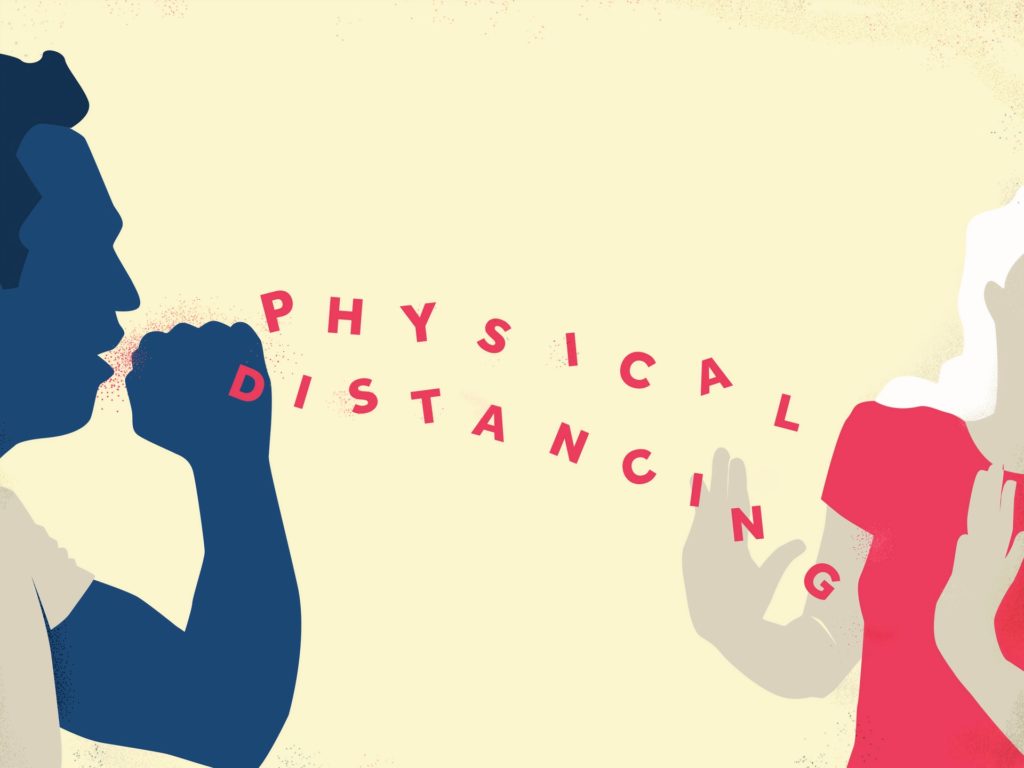
Respiratory aerosol size distribution
Size is probably the most fundamental parameter that describes aerosol particles. The upper limit of the size is considered to be approximately 100 μm (sedimentation velocity 0.25 m s-1). The lower limit of the size is arbitrary, generally taken as a few nanometers (size of the molecular clusters). (Baron and Willeke, 2011).
In this range, the properties and behavior of aerosols change significantly, which the WHO ignores or underestimates, arguing that droplets with an aerodynamic diameter greater than 5 μm are rapidly deposited within one meter of the emitter. This fundamental error persists for decades in WHO medical manuals. Wells. (1934) discovered the correct physics of droplets and droplet nuclei (aerosols). As the droplets decrease in diameter, the volume and gravitational attraction decrease faster than the surface area, which determines the resistance to falling through the air. Particles with a diameter of less than 100 μm soon reach a constant velocity. According to Stokes’ law, the rate of sedimentation is proportional to the surface area of the particle or to the square of its diameter. Result suggesting that droplets larger than 5 μm do not fall like projectiles, an erroneous WHO assumption. A 5 μm drop must have a mass 1000 times greater so that it can quickly fall to the ground. Because the mass increases with the cube of the diameter (Jiménez, 2020). Marr. (2020) estimate that it takes about half an hour for a 5 μm drop to fall to the ground from the mouth of an average-height adult, and in that time the drop can travel many meters in a stream of air. The droplets that are expelled by coughing or sneezing also travel distances much greater than one meter. Ryan. (2020) shows how drops of ~ 50 μm, (measured electrostatically) are suspended in the air and do not fall like projectiles (https://twitter.com/i/status/1283556047471378432).
The real size of the drops that fall rapidly to the ground corresponds to sizes greater than 50 μm, with a diameter 10 times greater and 1000 times the mass of a 5 μm drop (Jiménez, 2020). The size of the particle drastically changes the mode of transmission, which is why it is vitally important to correctly define the threshold value for transmission by droplets and by aerosols, due to the implications it has on the control and mitigation strategies of this pandemic.
Dispersion and dilution
There is a traditional belief that the ballistic droplet route is the dominant route for respiratory infections, due to its greater volume (Nicas et al., 2005). In this case, it must be considered that what matters is the volume of the particle inhaled by the susceptible person. The droplets are larger in volume, but the aerosols are more divided (polydisperse) and remain in the air for much longer, increasing the chances of inhalation. The precaution against contagion by drops is widely known; however, the mechanism of exposure to aerosols is poorly understood. The physics of the aerosol and the movement of the droplets undoubtedly favor exposure to aerosols. Jiménez. (2020) estimates that infections through aerosols is around 70%.

During respiratory activities, an exhalation column of respiratory particles of different sizes is generated, which could contain potentially infectious viral material (Wilson et al., 2020). The exhaled aerosols are more concentrated just in front of the nose and mouth, and the air stream becomes more and more diluted as the distance increases. To illustrate, we will use the analogy of the smoker. There will be more smoke between the smoker and the receiver if the separation is shorter; in this case, the receiver will inhale a large fraction of the smoke concentration. As we move away, the smoke dilutes, and we inhale a smaller fraction. Exhaled aerosols disperse like smoke, they just can’t be seen.
As we have seen, talking is the most important respiratory activity for generating aerosols, and asymptomatic and pre symptomatic carriers are very likely to transmit SARS-CoV-2 through speech and respiration. This makes it difficult to control COVID-19, since these carriers are not suspected (they do not cough or sneeze), so they are ignored in prevention and mitigation measures.
Recommendations
Without proven drugs or vaccines, we must appeal to the precautionary principle to protect ourselves from COVID-19. We recommend the following measures:
1. Social distancing is very important. As we mentioned, a distance greater than 2 meters is recommended and to avoid crowds of people, where the concentration of respiratory expulsions is higher.
2. Mandatory use of masks. The masks help to block the aerosols released by the infected person and prevent the susceptible person from inhaling the aerosols.
3. It is essential to ventilate rooms or workplaces. Open windows and doors. Portable air purifiers are ideal.
4. The authorities must communicate the risk to their entire population. Greater efforts are needed to report that we all emit potentially infectious aerosols in our respiratory activities.
References
Asadi S, Bouvier N, Wexler AS, Ristenpart WD. 2020. The coronavirus pandemic and aerosols: Does covid-19 transmit via expiratory particles? Aerosol Science and Technology:1-4. https://doi.org/10.1080/02786826.2020.1749229.
Asadi, S.; Wexler, A. S.; Cappa, C. D.; Barreda, S.; Bouvier, N. M.; Ristenpart, W. D. Aerosol Emission and Superemission during Human Speech Increase with Voice Loudness. Scientific Reports 2019, 9 (1), 2348. https://doi.org/10.1038/s41598-019-38808-z.
Baron, P. A., Willeke, K., and Kulkarni, P. A. Aerosol Measurement: Principles, Techniques, and Applications, Third Edition. # 2011 John Wiley & Sons, Inc. Published 2011 by John Wiley & Sons, Inc.
Cole, E.C., and Cook, C.E. (1998). Characterization of infectious aerosols in health care facilities: Anaid to effective engineering controls and preventive strategies. American Journal of Infection Control, 26, 453–464.
Haslbeck K, Schwarz K, Hohlfeld J.M, Jörg R.S, Koch. Submicron droplet formation in the human lung Journal of Aerosol Science 2010, 41 (20103), 429–438. https://doi.org/:10.1016/j.jaerosci.2010.02.010
Holmgren H, Ljungstör E, Almstrand A.C, Björn B, Olin A.C. Size distribution of exhaled particles in the range from 0.01 to2.0 μm. Journal of Aerosol Science 2010, 41 (2010), 439–446. https://doi.org/10.1016/j.jaerosci.2010.02.011.
Jimenez, J.L., (2020): COVID-19 Data Dives: Why Arguments Against SARS-CoV-2 Aerosol Transmission Don’t Hold Water -Medscape -Jul 30, 2020. https://www.medscape.com/viewarticle/934837?src=uc_mscpedt&faf=1#vp_1
Johnson, G.R., and Morawska, L. (2009). The mechanism of breath aerosol formation. Journal of Aerosol Medicine and Pulmonary Drug Delivery, 22, 229–237. DOI: 10.1089/jamp.2008.0720
Johnson, G. R., L. Morawska, Z. D. Ristovski, M.Hargreaves, K. Mengersen, C. Y. H.
Marr Linsey C: Yes, the Coronavirus Is in the Air, New York Times, July 30, 2020. Available, https://www.nytimes.com/2020/07/30/opinion/coronavirus-aerosols.html (accessed 2020, 01 August)
Morawska, L.; Johnson, G. R.; Ristovski, Z. D.; Hargreaves, M.; Mengersen, K.; Corbett, S.; Chao, C. Y. H.; Li, Y.; Katoshevski, D. Size Distribution and Sites of Origin of Droplets Expelled from the Human Respiratory Tract during Expiratory Activities. Journal of Aerosol Science 2009, 40 (3), 256–269. https://doi.org/10.1016/j.jaerosci.2008.11.002
Morawska, L. and Milton D, It is Time to Address Airborne Transmission of COVID-19, Clinical Infectious Diseases, , ciaa939, https://doi.org/10.1093/cid/ciaa939
Nicas, M., Nazaroff, W.W., & Hubbard, A. (2005). Toward understanding the risk of secondary air borne infection: Emission of respirable pathogens. Journal of Occupational and Environmental Hygiene, 2, 143–154.
Papineni, R. S. & Rosenthal, F. S. The size distribution of droplets in the exhaled breath of healthy human subjects. Journal of Aerosol Medicine and Pulmonary Drug Delivery 10, 105–116, https://doi.org/10.1089/jam.1997.10.105 (1997).
Ryan Davis. Droplets of ~ 50 μm are suspended in the air. (@MicroLevitator) https://twitter.com/i/status/1283556047471378432
Wells, W. F. On Airborne Infection: Study II. Droplets and Droplet Nuclei. American Journal of Epidemiology 1934, 20 (3), 611–618. https://doi.org/10.1093/oxfordjournals.aje.a118097.
Wilson N, Corbett S, and Tovey E. Airborne transmission of covid-19. BMJ 2020; 370. https://doi.org/10.1136/bmj.m3206
World Health Organization (WHO): Question and Answers: How is COVID-19 transmitted? 09 July, 2020. Available https://www.who.int/emergencies/diseases/novel-coronavirus-2019/question-and-answers-hub/q-a-detail/q-a-how-is-covid-19-transmitted?gclid=EAIaIQobChMIq6y-6Oy76wIVjYSRCh3SGwa1EAAYASAAEgKFTvD_BwE (accessed 2020, 03 August)
World o Meters, (2020): Global COVID-19 statistics. Available https://www.worldometers.info/coronavirus/ (accessed 2020, 25 October).
Rafael N. Liñán Abanto, PhD in Atmospheric Sciences by Universidad Nacional Autónoma de México (UNAM).
He is currently a Professor and Director of the Department of Physics at the Universidad Nacional Jorge Basadre Grohmann
de Tacna, Peru. His research focuses on the optical properties of atmospheric aerosols and the concentration of black carbon.



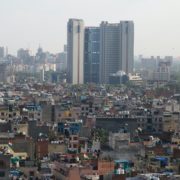


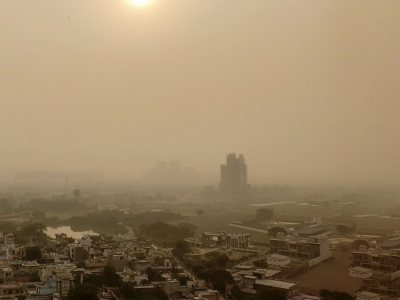




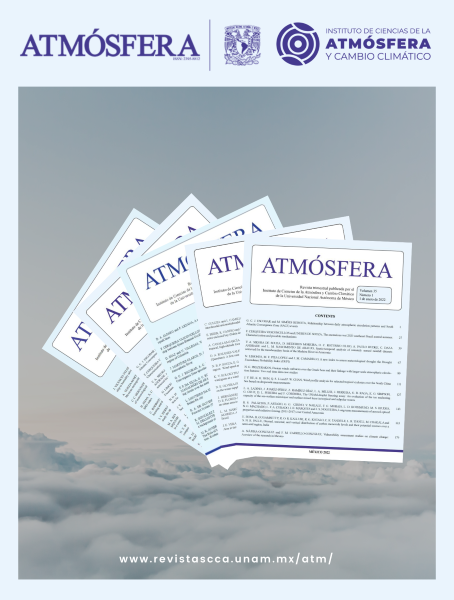
I’ll immediately seize your rss feed as I can not find your email subscription link or e-newsletter service.
Do you’ve any? Please let me realize in order that I could subscribe.
Thanks.
Hi,
We have a newsletter, you can see the link to subscribe if you scroll down a bit on the main page.
Regards,
Graciela B. Raga, Chief Editor
I enjoy what you guys are up too. This sort of clever work and
coverage! Keep up the wonderful works guys I’ve added you guys to
our blogroll.
I needed to thank you for this fantastic read!!
I absolutely enjoyed every bit of it. I have you bookmarked to check out new things you post…